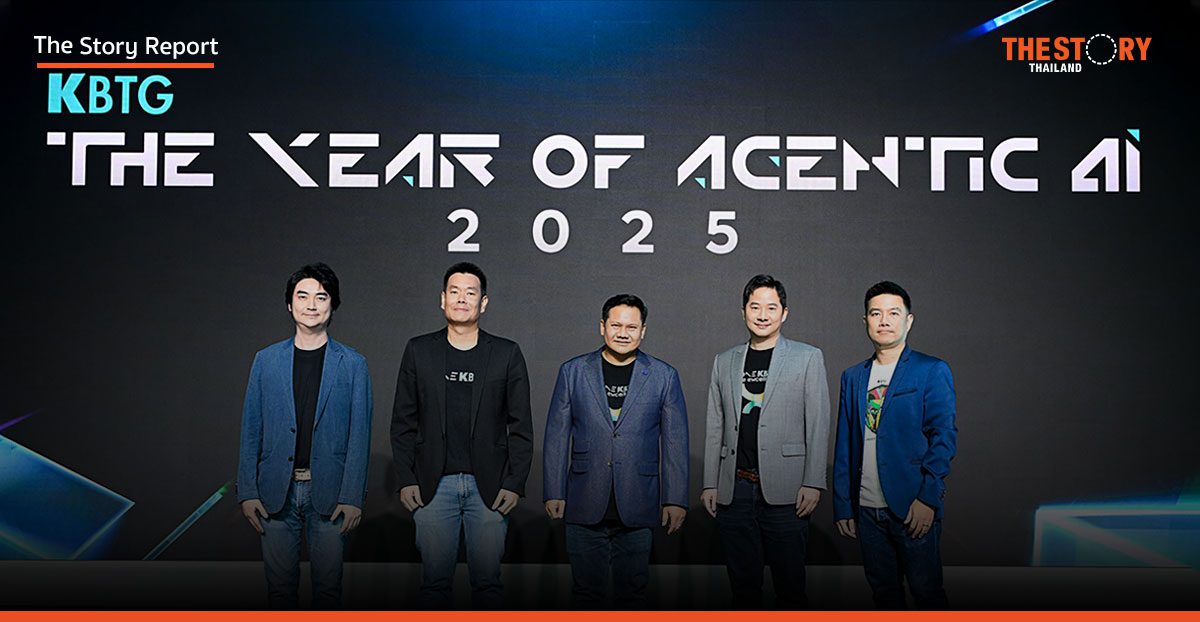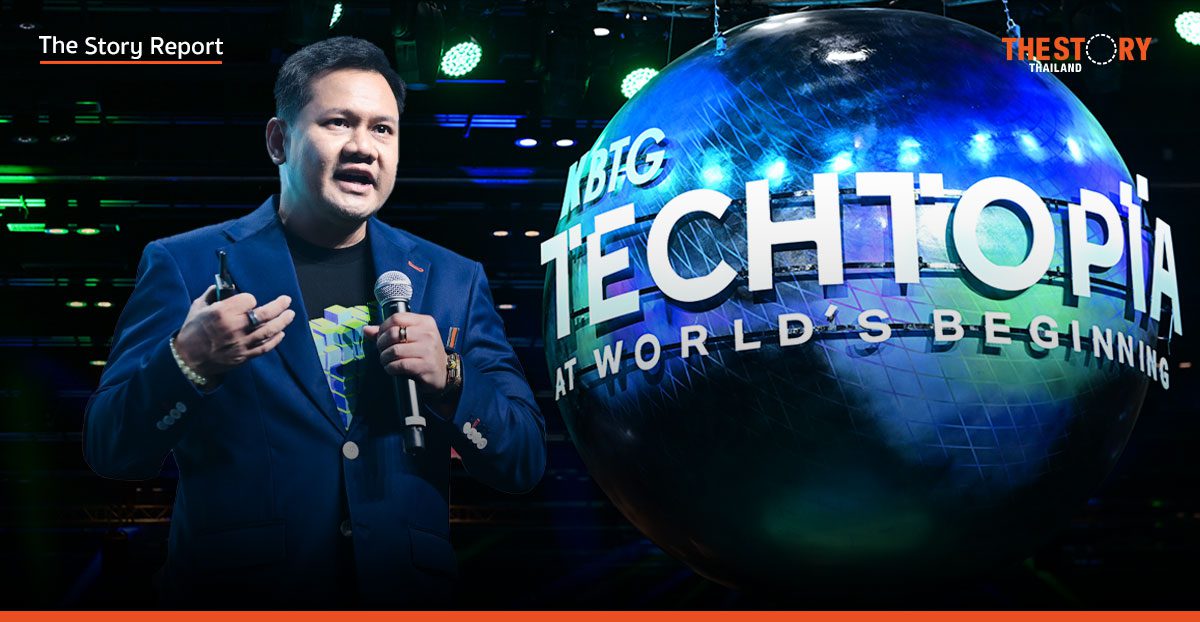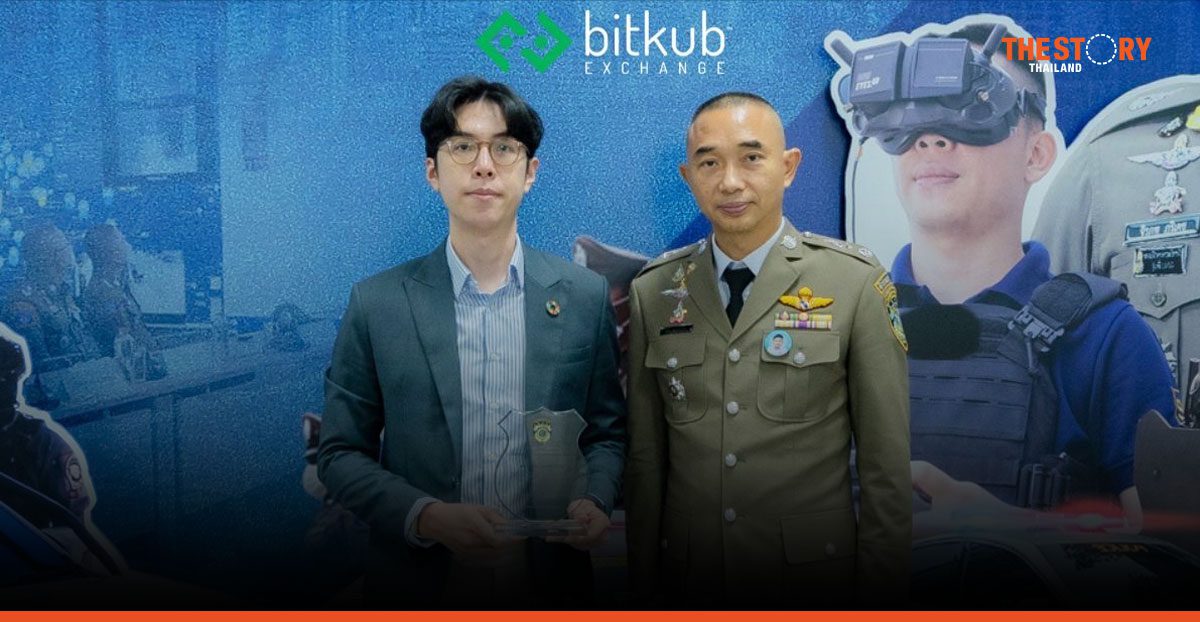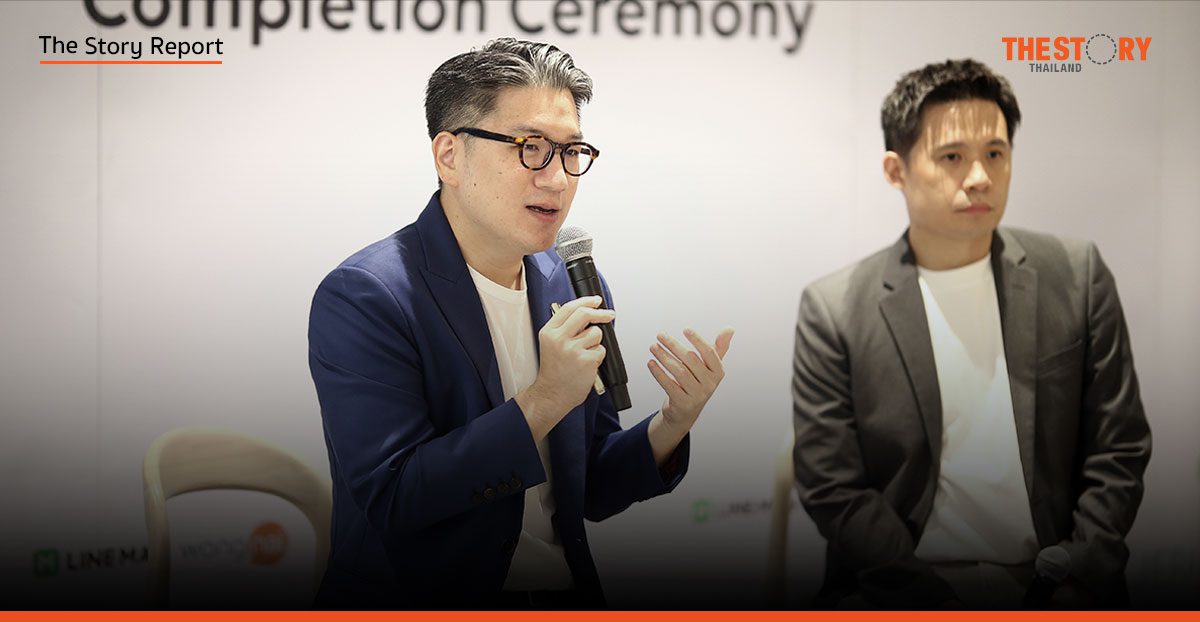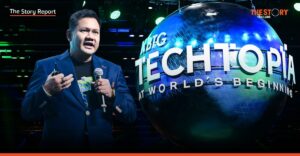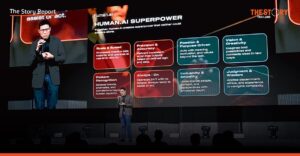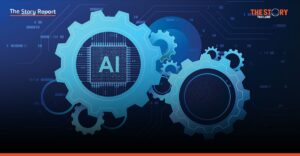KBTG has set an ambitious goal to generate a 10 billion baht business impact through its Human-First x AI-First Transformation over the next five years, from 2025 to 2029. This initiative kicks off in 2025, marking the first step in KBTG 3.0 and a significant leap forward in the company’s AI journey.
As KBTG reaches its tenth anniversary in 2025, it concludes its first decade and embarks on its second by entering a new era known as KBTG 3.0.
The first era, spanning from 2016 to 2018, focused on establishing and solidifying the company’s foundation.
The second era, from 2019 to 2023, saw continuous transformation across all dimensions, including core operations, technology architecture and infrastructure, people and culture, regional expansion, and the shift towards Machine Learning – AI – Data (M.A.D.).
This leads to the latest transformation, Human-First x AI-First, which began in earnest in 2024. This approach evolved from the previous year’s AI-First Transformation strategy, as KBTG firmly believes that the value and sustainability of a tech company stem from prioritizing people.
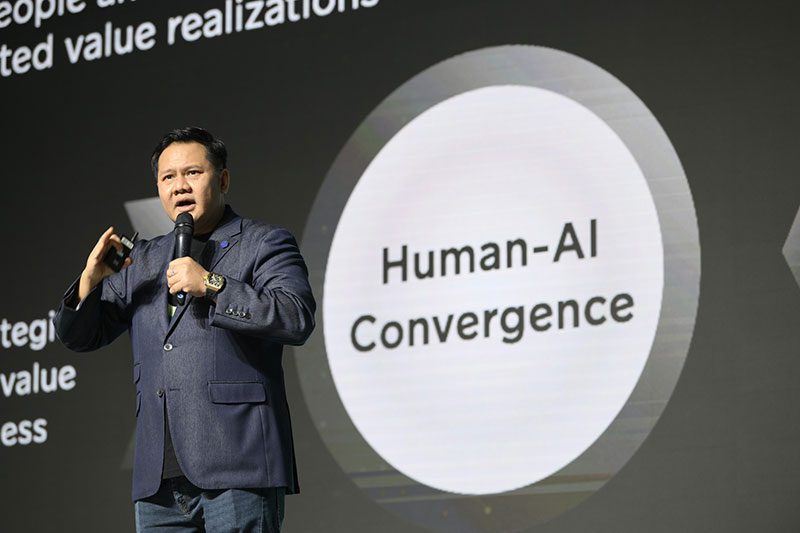
“People must always come first. The technology we develop at KBTG must improve human lives, whether it’s our customers or employees,” said Ruangroj “Krathing” Poonpol, Group Chairman of KBTG.
Transformation is a marathon, especially for a tech company like KBTG, which has declared its commitment to being “one step ahead.” This requires constant vigilance, adaptation, and preparation.
2024 marks the first year of the KBTG 3.0 era, under the Human-First x AI-First Transformation strategy. Remarkably, KBTG has already achieved a billion-baht business impact within a single year. This success stems from integrating Machine Learning – AI – Data (M.A.D.) into its banking operations, spanning credit, wealth management, payments, sales, and customer service.
Simultaneously, KBTG has generated substantial revenue, both directly and indirectly, through its AI innovations and real-world applications (use cases). This is particularly noteworthy given KBTG’s core focus on software development.
Examples include an AI Coding Assistant that boosts efficiency by 50%, the Ge-DI Data Analytic AI Agent, an HR Chat Agent (which earned KBTG recognition as an AI Pioneer from LinkedIn), and an AI-Powered Software Quality Management system implemented across 15 projects.
To become an AI-driven company, everyone needs AI skills. Of KBTG’s 2,600 employees, all possess AI literacy, and 250 are skilled AI Engineers, a number expected to reach 1,000 by 2025.
Crucially, KBTG established the K-DAI Council, a central unit ensuring that everyone in the organization has access to AI technology and its capabilities, fostering an AI-ready workforce.
KBTG’s tangible AI innovations have already made their mark. THaLLE, a Thai-language financial LLM, passed the CFA Level II exam in June and the SET’s investment consultant exam.
FutureYou is a GenAI enabling self-reflection and long-term thinking by allowing users to “converse” with their future selves.
FinLearn serves as an AI-powered personal financial coach. And Waan AI offers a platform for data analytics and financial assistance.
KBTG 3.0
2025 marks a new chapter for KBTG, embarking on a larger-scale transformation to become an AI-powered organization. This means integrating AI into every facet of its operations as a technology company.
KBTG’s AI innovation strategy centers around AthenaMind, a multi-modal, multi-agent platform designed to generate numerous AI agents, effectively functioning as an AI agent factory.
“This year, we introduced our new ‘OneKBTG be Excellent’ culture. Next year (2025) will bring the most significant restructuring in KBTG’s history, enhancing our efficiency and establishing us as a leader in the AI era. We’re not just creating individual AIs; we’re building an AI innovation factory,” said Ruangroj.
KBTG’s 2025 plans align with the anticipated trajectory of AI, where human-AI collaboration is projected to increase productivity by 6.5 times within the next decade. Three key AI trends are expected to dominate in 2025: AI for Decision Intelligence, AI Agents, and AI Guardrails.
AI for Decision Intelligence encompasses using AI to provide insights and recommendations for human decision-making. This includes AI-powered monitoring of IT infrastructure, human-AI collaboration in customer service through chatbots, and AI-driven decision automation in tasks like identity verification (eKYC).
By 2026, it’s estimated that 75% of Global 500 companies will incorporate AI into their decision-making processes. This trend positions AI Agents as a central strategy for KBTG.
AI Agents are AI systems capable of making decisions and executing tasks autonomously. The future envisions AI working alongside humans, dramatically increasing efficiency and effectiveness.
AI Agents can be integrated into all business activities, from sales and R&D to support, customer service, and IT, including software development and cybersecurity. By 2028, it’s predicted that 33% of software companies will utilize Agentic AI in their development processes.
With the growing adoption of AI, AI Guardrails become critical. These involve developing ethical and responsible AI, using AI to evaluate, govern, and oversee other AI systems. Responsible AI, with standards akin to those for cybersecurity, will become as essential as cybersecurity is for companies today.
KBTG is poised to embrace this new chapter of Human-First x AI-First Transformation, where the organization operates as an AI-driven entity, with AI embedded in every aspect of its being.

Thadpong Pongthawornkamol Managing Director of KBTG, explains that Agentic AI is a type of artificial intelligence that combines generative AI with knowledge, resulting in AI with capabilities and knowledge comparable to humans.
This explains the significance of the Agentic Principle. As humans have become increasingly digitalized, communicating and interacting more through digital channels, AI has simultaneously become more humanized, able to communicate and work like people.
These two phenomena have ushered in the era of Human-AI Convergence, where humans and AI collaborate seamlessly as agents. KBTG believes this represents the future of work.
“Soon, you’ll be chatting with a colleague and won’t know if it’s a person using a chatbot or an AI bot,” said Thadpong. “This new context of work requires organizations to adapt their structures and processes to unlock the potential of this collaborative model, enhancing efficiency in both business and technology.”
Thadpong highlights three key principles for developing and enhancing Agentic AI. First is Agentic Platformization. The future demands rapid AI agent creation to meet diverse needs across IT, business, marketing, and other domains.
Tech giants are already releasing tools that combine generative AI with organizational knowledge to boost efficiency, such as Google Cloud’s Vertex AI Agent Builder and Microsoft’s Co-Pilot Studio Autonomous Agent. KBTG has also developed its own AI agent creation platform, AthenaMind, also known as the KBTG Agent Factory.
The second principle is Agentic Orchestration, which involves redesigning business processes to support collaboration between human and AI agents. Workflows must be reimagined to accommodate this new reality. For organizations to thrive, they must establish processes that enable human and AI agents to work together effectively.
Third is Agentic Humanization, which focuses on preparing the workforce for collaborating with AI colleagues. This encompasses addressing the psychological effects of this shift, enhancing skills across the organization, and fostering a workplace culture that embraces AI collaboration. These three principles are fundamental to KBTG’s strategy for navigating the future of work.
AthenaMind: KBTG’s AI Agent Platform
This year, KBTG developed its own Agentic Platformization solution, AthenaMind. This platform serves as a central hub for producing AI agents for various applications (Multi-Agent Factory) and efficiently managing them (Agent Creation and Orchestration).
AthenaMind boasts several key features. Its flexible interface allows it to connect with any UX/UI and backend system. It’s also low-operation, making it easy to combine AI with organizational knowledge. AthenaMind streamlines the process of creating and managing AI agents across different departments.
Furthermore, as a Fintech company, KBTG prioritizes data security and trust. AthenaMind, as a centralized platform, ensures good governance regarding data and prompts, enabling rapid development of new products while maintaining data security.
Finally, it can connect with any Large Language Model (LLM).
“As technology rapidly evolves, AthenaMind provides a platform for us to experiment, test, and select the most suitable LLMs and applications to enhance its capabilities,” explained Thadpong.
“We’ve already used AthenaMind to create numerous AI agents, including those for data analysis, risk assessment, and financial regulation compliance. This is just the beginning. Next year, we expect to see an explosion of AI agents,” said Thadpong.
“Humans will become more like robots, and robots will become more like humans. Ultimately, we’ll reach an Agentic Principle where there’s no distinction between humans and AI, but rather agents working together,” said Thadpong.
Agentic AI in Software Development
KBTG is leveraging AI to enhance its software development capabilities. New tools designed to increase coding speed and accuracy are empowering the company’s programmers to focus on innovation.
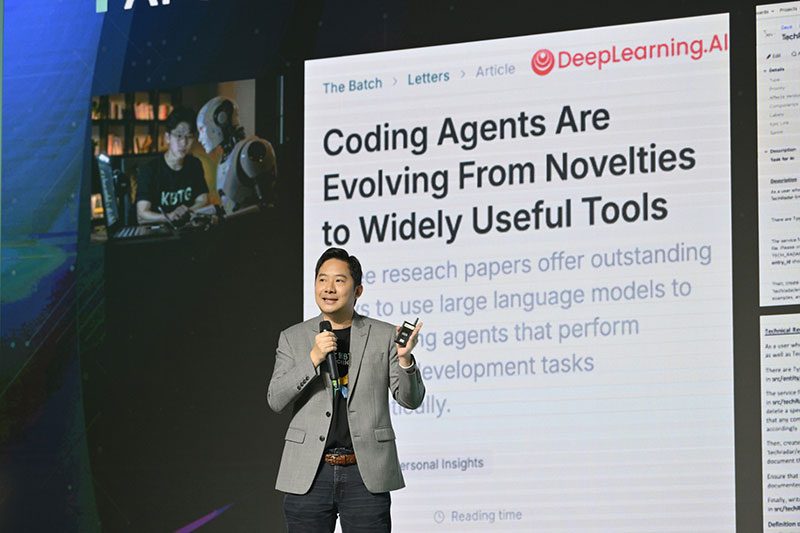
Jirat Srisawat, Assistant Managing Director – Technical Excellence at KBTG, said that their approach to AI in software development takes three forms: using AI as a coding assistant to aid developers, utilizing AI as a coding agent to generate code for review by developers, and integrating AI throughout the entire software development lifecycle (SDLC) in a multi-agent approach. KBTG employs all three methods to varying degrees.
Initially, using AI as a coding assistant proved less efficient than working without it. This highlighted the importance of human involvement and the need to educate developers about AI’s capabilities and limitations. Once developers were properly trained, the results improved significantly.
A prime example is software modernization. By implementing an AI coding assistant, KBTG reduced the time required from 100 man-days to less than 50, achieving a productivity gain of over 50%.
Another benefit is bridging the gap between different programming languages. Now, developers with expertise in different languages can collaborate seamlessly on projects, with quality comparable to that of specialists in each language.
Furthermore, the AI coding assistant has improved the quality of code and testing. In the past three months, over 500,000 lines of AI-generated code, under the quality control of software engineers, have been deployed at KBTG.
“We believe this is the right direction,” said Jirat. “It aligns with what Sundar Pichai, CEO of Google, said at the Alphabet 2024 Q3 Earning Call: approximately 25% of new code at Google is written by AI. Our proportion is still lower, and we plan to increase our use of AI as a coding assistant.”
KBTG has also explored using AI as a coding agent, where humans primarily review and verify the code. In real-world scenarios, tasks that previously took developers half a day can now be completed by the AI agent in just 5 minutes. KBTG aims to assign half of its small coding tasks to coding agents.
Looking ahead, KBTG plans to integrate human-AI collaboration into every stage of the SDLC, from planning and analysis to development and testing. This multi-agent SDLC, where humans and AI work together seamlessly, is seen as the future of software development.
“These three areas – coding assistant, coding agent, and multi-agent SDLC – are our focus,” Jirat emphasized. “We believe all our software engineers must be able to use and create AI. Coding agents will handle smaller, repetitive tasks, freeing our engineers to tackle more complex problems. And the multi-agent SDLC will ensure that humans and AI collaborate throughout the entire development process. This is our vision for AI in software development at KBTG.”
KBTG’s Three-Pillar Strategy
KBTG has set an ambitious goal to generate a 10 billion baht business impact through its Human-First x AI-First Transformation over the next five years, from 2025 to 2029. This initiative is built on three core pillars: AI-Driven Innovation, Human-AI Convergence, and a World-Class Ecosystem.
AI-Driven Innovation: KBTG has already launched ten AI innovations, with more in the pipeline. Its multi-agent platform, AthenaMind, accelerates AI innovation, allowing KBTG to achieve its ambitious business goals.
KBTG has cultivated a robust internal AI innovation ecosystem. KLabs spearheads research, while KX focuses on commercialization, taking research from KBTG Labs and bringing it to market. A dedicated $100 million AI investment fund, KXVC, further fuels innovation. Additionally, the KX Horizon program fosters collaboration with startups worldwide to accelerate the development of cutting-edge AI solutions.
Human-AI Convergence: This pillar focuses on integrating human capabilities with AI to maximize efficiency. KBTG aims to empower its workforce through AI, exceeding the average productivity increase of 6.5 times and achieving a tenfold boost in organizational capabilities.
Initially, prioritizing AI over people led to decreased efficiency. KBTG learned that the key to successful AI implementation lies in creating a supportive work environment and preparing employees. A human-centric approach is essential for all AI initiatives, including software development and product design.
“This is another major transformation for KBTG,” said Ruangroj. “I call it an AI-infused organization. We’re embedding AI capabilities into our people and every aspect of our operations, creating a seamless integration of humans and AI.”
This requires an AI-Augmented Workforce Transformation, revolutionizing how people think and work. KBTG has implemented company-wide AI literacy programs, ensuring all 2,600 employees have a foundational understanding of AI. The company is also actively building its AI talent pool, with 250 AI developers today and a goal of 1,000 by 2025.
Beyond cultural and operational changes, KBTG will undergo a human-centric organizational restructuring in 2025. This is projected to increase KBTG’s capabilities tenfold over the next decade (2024-2033).
World-Class Ecosystem: A strong ecosystem is crucial for success in the AI arena. KBTG recognizes the importance of partnerships and has been actively collaborating with organizations in Thailand, the region, and globally.
In the past year, KBTG has partnered with MIT Media Lab, Google Research, and AI Singapore. Going forward, KBTG will elevate its global ecosystem to position itself and Thailand as key players in the global AI landscape. This ecosystem will encompass research, education, investment, and co-creation initiatives.
With its 2025 strategic plan, dubbed “The Year of Agentic AI,” and its three-pillar approach, KBTG is poised to become a fully equipped tech company in the AI era. This strategy will undoubtedly place Thailand on the global AI map as a leader in the AI ecosystem.
Semiconductor Board approves national strategy to attract 500B baht investment
KBTG Labs: AI Research Powerhouse to Drive Market Innovation


